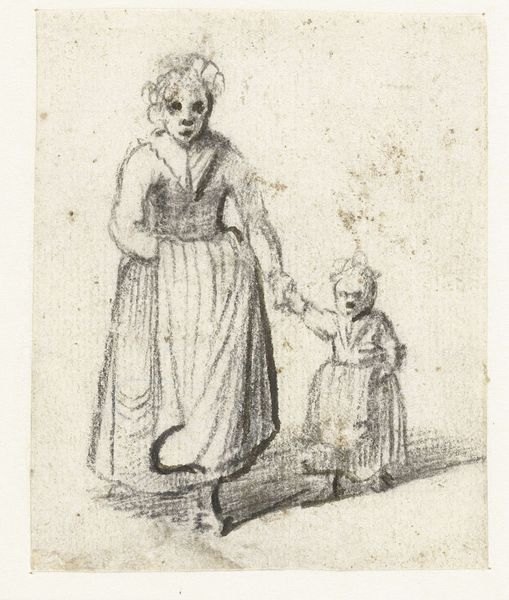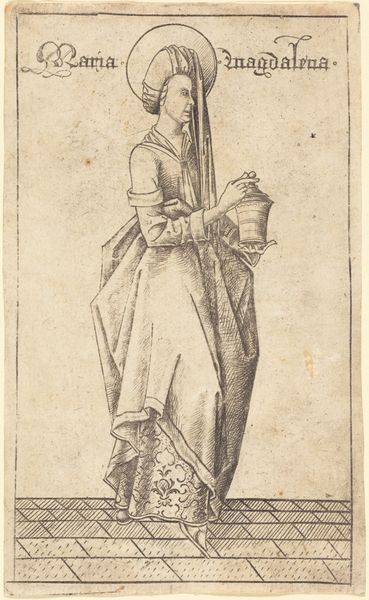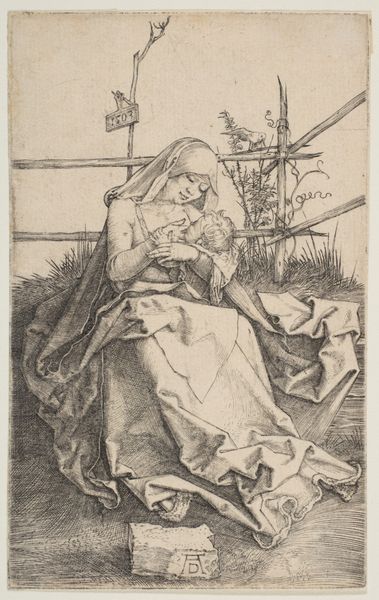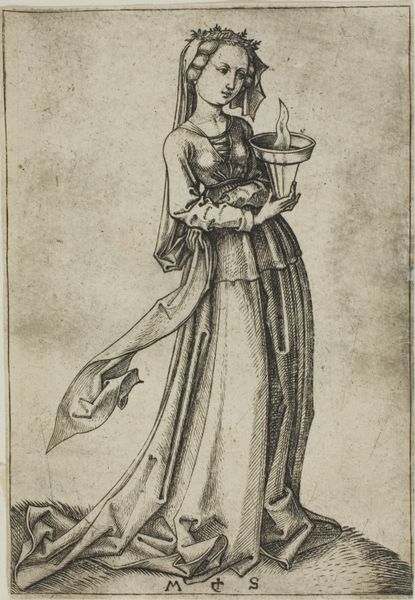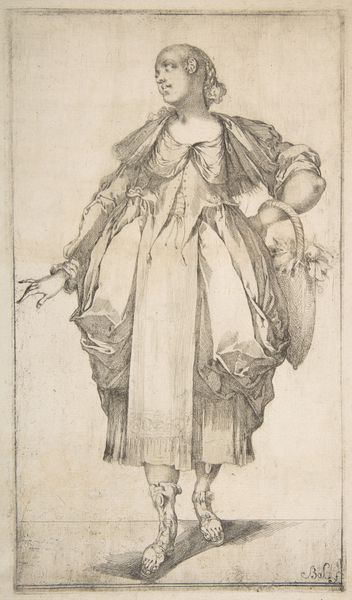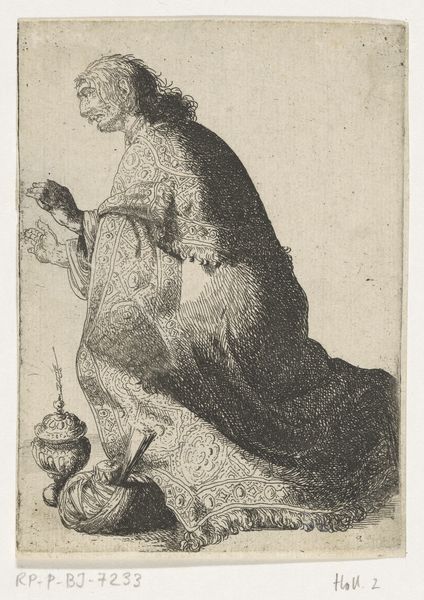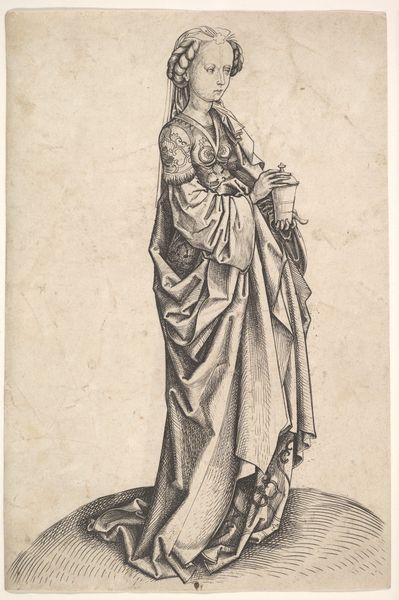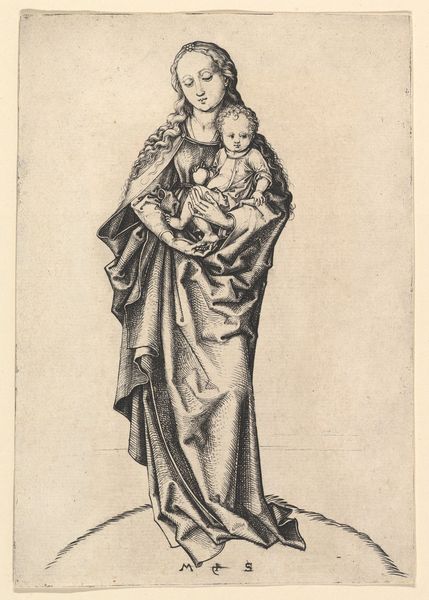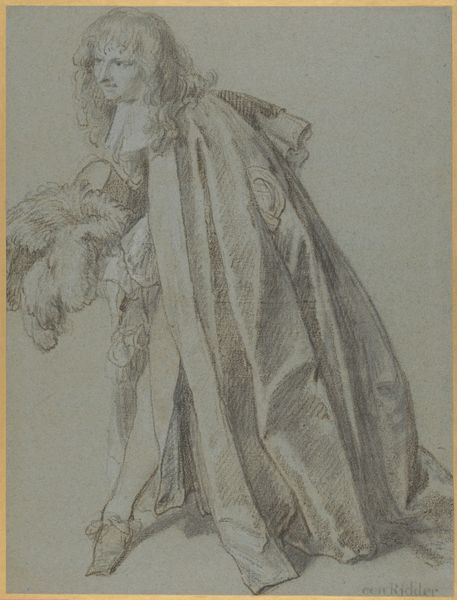
drawing, ink, indian-ink
#
drawing
#
toned paper
#
light pencil work
#
quirky sketch
#
pen sketch
#
death
#
pencil sketch
#
11_renaissance
#
personal sketchbook
#
ink
#
indian-ink
#
pen-ink sketch
#
13_16th-century
#
sketchbook drawing
#
pencil work
#
sketchbook art
Copyright: Public Domain
Hans Schäufelein created this pen and ink drawing, "Woman and Death as Trainbearer," in Germany during the early 16th century. The image presents a young woman, likely of the upper class, standing next to a personified figure of Death. The skeleton kneels behind her, bearing the train of her gown, and balances an hourglass on its head. The piece visualizes a central preoccupation of the time: mortality. Death is present, even in moments of prosperity and beauty. The image speaks to the impact of the plague and other deadly diseases on the cultural imagination of the period. Notably, Schäufelein was a student of Dürer. Here, we see him responding to Dürer’s aesthetic, but also making use of his own distinct vocabulary. By studying the social history of the period and the institutional history of Northern Renaissance art, we can better understand how the artist conveys these cultural anxieties.
Comments
No comments
Be the first to comment and join the conversation on the ultimate creative platform.

